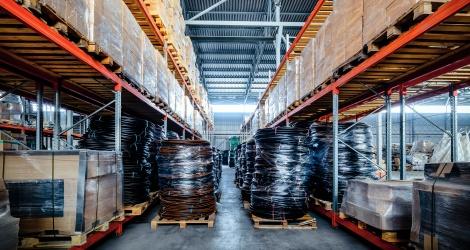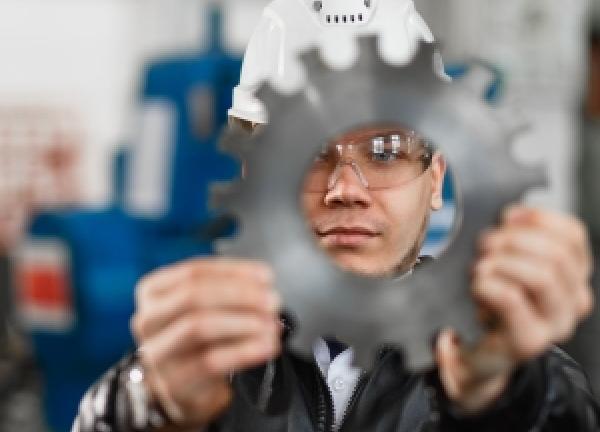How packaging is thinking outside the box to become sustainable
Faced with the global tide of waste, much of it generated by packaging and especially non-recyclable plastics, manufacturers and companies are looking for high-performance, eco-friendly solutions. So could packaging really go "green"?

Under attack, but indispensable... packaging has to evolve.
That’s because as the world tries to hunt down the waste choking our planet, packaging is getting a particularly bad press, from the over-packaging of products to the excessive use of plastics, and yet it still accounts for nearly half of all household waste. So why not simply do without these ‘superfluous’ materials? The simple answer is that packaging is not superfluous! It provides a vital service in the product consumption cycle by enabling the transportation, protection and conservation of products of every kind, from food to construction materials. Packaging is also an essential source of information and tracking data for customers.
So why don’t we break this spiral of pollution by making all packaging 100% recyclable? There is no single answer, because although waste sorting is now commonplace, recycling is not a consistent practice around the world. Added to which, not everything can yet be recycled. New solutions like biodegradable materials, recyclable plastics and the return of the deposit system are emerging, but still have a long way to go.
The packaging numbers show just what a challenge this is
The global packaging market, which includes cardboard, flexible packaging, rigid plastic, metal and glass, is worth more than $900 billion. Every type of packaging material is seeing year-on-year demand and market growth averaging 3.1%, with wide geographical variations (1.2% growth in the USA, but 5.2% in China, for example). So it follows that the volume of packaging waste we produce is still growing too. According to a McKinsey survey, estimates suggest that every person in Europe was responsible for 174 kg of packaging waste in 2018. In an attempt to curb this growth, Europe has set a target requiring 55% of plastic packaging to be recycled by 2030.
The Saint-Gobain Group is part of this virtuous circle, having announced its own commitment to ensuring that the plastics it uses incorporate 30% recycled material by the same date. The figure for packaging will be 100%.

The supply chain is now setting higher standards than at any time in the past
Given this context, what room for maneuver do companies that rely on third-party packaging suppliers have? This question tends to be answered by putting in place a highly detailed and ambitious purchasing policy, which in turn allows them to consolidate local good practices and identify those suppliers best able to meet their environmental goals. Identifying the right supplier is as crucial as it is complex, because the market varies so much from one solution to another. For example, plastics can be purchased from national or continental suppliers, but paper bags are distributed at the global level. When it comes to cardboard boxes, these are available only from a handful of very large companies. So buying a packaging solution in a specific region on the basis of strict criteria can often be quite a challenge.
Legislation, consumers and technology... the levers for change are all in place
The challenge may seem complex, but on closer inspection, there are some changes that signpost an increasing convergence of consciousness and action on several levels. This offers those companies keen to address the environmental challenges a number of levers they can use.
Firstly, consumer pressure is a reality and growing stronger all the time, even if there is still a level of double standards between what people say and what they actually buy. According to the 2020 European Packaging Preferences survey conducted by Two Sides, 48% of consumers would avoid retailers that are not actively trying to reduce their use of non-recyclable plastic packaging.
In the corporate world, many companies have now adopted the goal of achieving carbon neutrality by 2050, especially since the cost of recycling technologies is becoming more affordable on an industrial scale, as has been the case with the chemical recycling of polymers.
Lastly, legislation is being tightened right around the world to encourage eco-friendly practices. For example, the UK introduced a new tax in January for packaging that does not contain at least 30% recycled plastic. In the US, 16 states have adopted regulations to bear down on packaging waste. In India, legislation favors recyclable substrates and formats, and is pushing for more collection points. China, on the other hand, has banned imports of plastic waste and even approved legislation to reduce single-use plastics, and increase the recycling, recovery and recirculation of used plastics.
"Green" packaging... impressive opportunities for innovation
In many companies, including Saint-Gobain, cross-functional use of R&D resources is leading to the development of inspirational and practical alternatives. The solutions have their roots in the 3Rs rule: reduce (or refuse) / reuse / recycle.
• Reduce - or better yet - eliminate. This means reducing the quantity of packaging actually required, producing thinner plastic films, making cardboard lighter and/or eliminating over-packaging altogether. This is already happening at Nestlé, for example, which has replaced its plastic packaging in Japan with flexible paper packaging. Another example is ready-to-eat salads that now come in cardboard bowls.
• Reuse. This means developing reverse logistics and retaining some elements of packaging and materials (cardboard boxes, pallets, etc.) so that they can be repurposed. This strategy is now in use at UPS, which is asking its users to keep their boxes and use them for reshipment to reduce the impact on the environment.
• Recycle. This means putting more recycled material into packaging materials, at the same time as making packaging recyclable by using single material solutions wherever possible. For example, Colgate-Palmolive is the first company to commit to producing a 100% recyclable toothpaste tube by 2025.
Looking beyond miracle solutions to involve all stakeholders
So as you can see, setting out the broad outlines for a more sustainable packaging solutions anything but the latest trend. It is an absolutely essential commitment in which everyone at every link in the value chain has a role to play, from countries and companies to suppliers and consumers. To meet the challenge and move things forward in the right direction, we need to be open to the idea of all recycling and recovery options. Because there is no miracle solution. Whatever we do will make a difference only if every stakeholder in the packaged goods supply chain is fully onboard with eco-design and recycling solutions. And if we want to achieve that, we certainly don’t need to wait until 2030
Credits : Vladyslav Lehir/Shutterstock ; Nordroden/Shutterstock
The latest stories
All stories
View more



